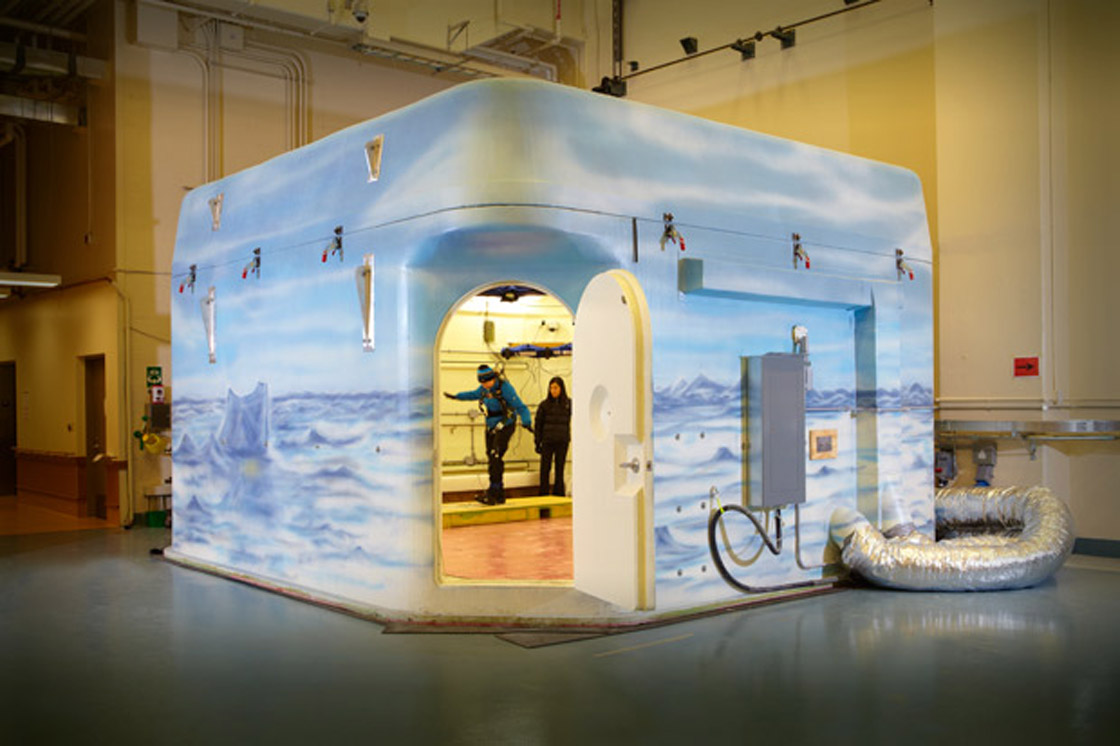TORONTO – Slipping on ice or snow is a rite of passage in Canadian winters. But a group of scientists working in an ice-rink laboratory are looking into how to avoid those nasty wipe outs that leave us with sprained ankles, thrown backs and broken bones.

In the WinterLab at Toronto Rehabilitation Institute, researchers don parkas, scarves and hats to brave subzero temperatures and walk on icy surfaces to see how Canadians can avoid falling.
The Lab replicates winter in a number of ways: the temperatures dip to -20C, concrete and other surfaces are lined with ice, meanwhile winds gust to up to 30 kilometres per hour.
A motion platform that can be tilted to turn into slopes or curbs also moves around to help them test the mechanics of falling.
But it’s all done in a controlled setting. Subjects are strapped into body harnesses connected to a robot that moves with them and tightens the harness if they fall.
The goal is to help Canadians handle the slippery winter months by developing and testing winter clothing, footwear and mobility aids such as wheelchairs and walkers.

Get weekly health news
“People slipping and falling in the winter is a big problem,” says Tilak Dutta, a scientific associate with the institute.
There are about 25 to 30 researchers on Dutta’s team.
“We’re trying to look at it from as many angles as possible,” he told Global News.

Seniors are a priority in the team’s research, Dutta said. That’s because they’re most vulnerable of suffering long-term complications after they fall.
One in three seniors in Canada falls each year and up to 40 per cent that end up with a broken hip from the injury die within a year.
“You have to be laid up in a bed for a while healing, you get deconditioned, your cardiovascular health declines and there are all sorts of things that start to change. We want to prevent those sorts of injuries if we can,” Dutta said.
The institute suggests that more than 21,000 Ontarians visited the emergency room because of injuries from falling on ice or snow.
The national price tag for treating fall-related injuries is $2.8 billion a year.
Aside from seniors, the institute is already looking into how to help Canadian post office workers. The country’s mailmen spend most of their days outdoors in all types of weather.
So far, the researchers have isolated a few factors in avoiding falls:
– Designing adequate footwear that’ll grip better in snow and ice
– Sloping curbs so that they’re more accessible for canes, walkers and wheelchairs
Read more about the WinterLab here.
carmen.chai@globalnews.ca
Follow @Carmen_Chai





Comments